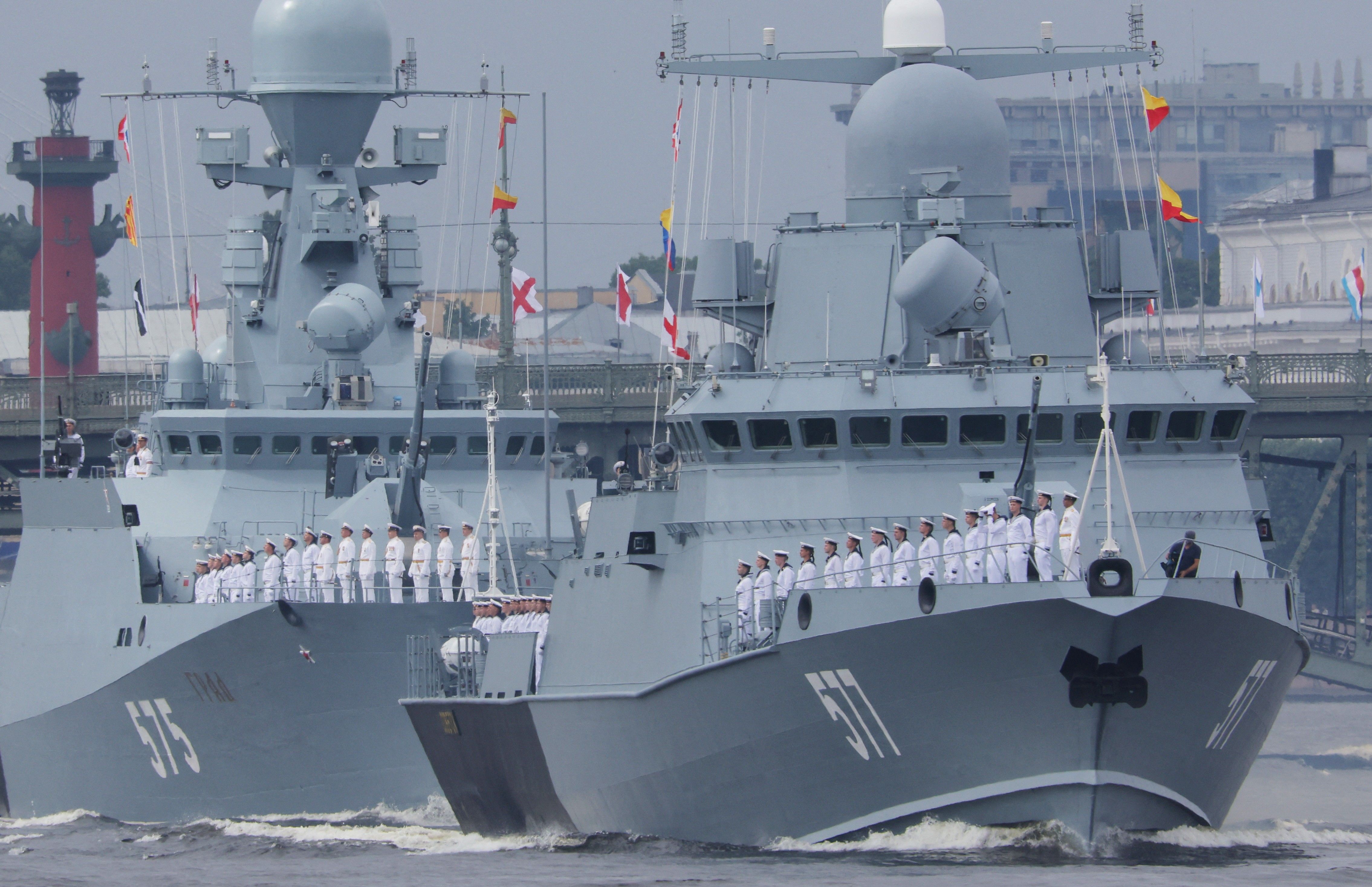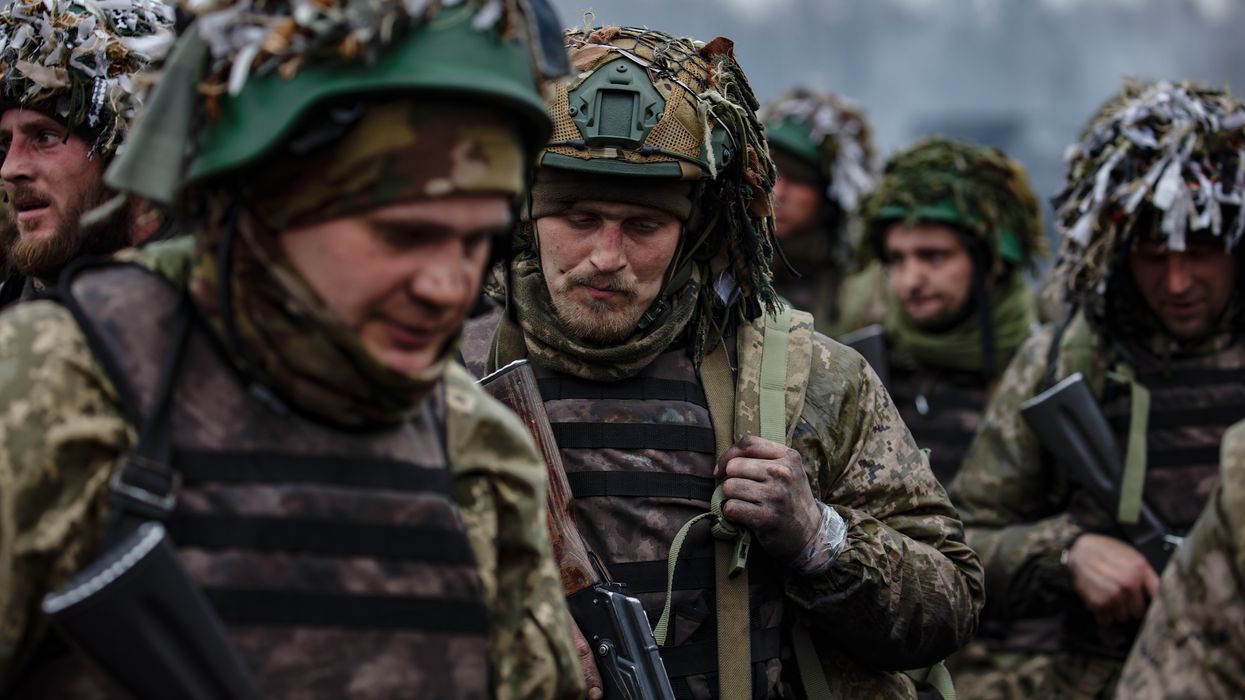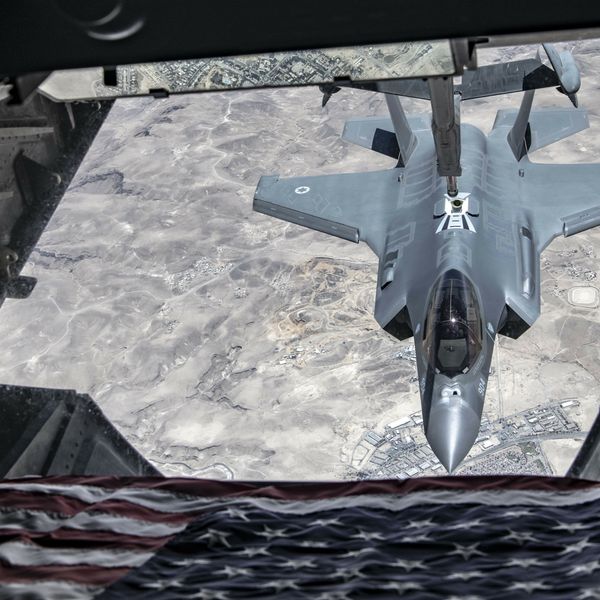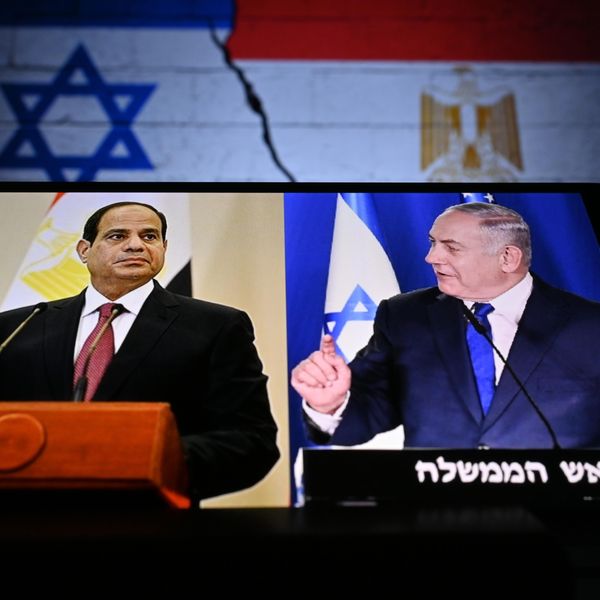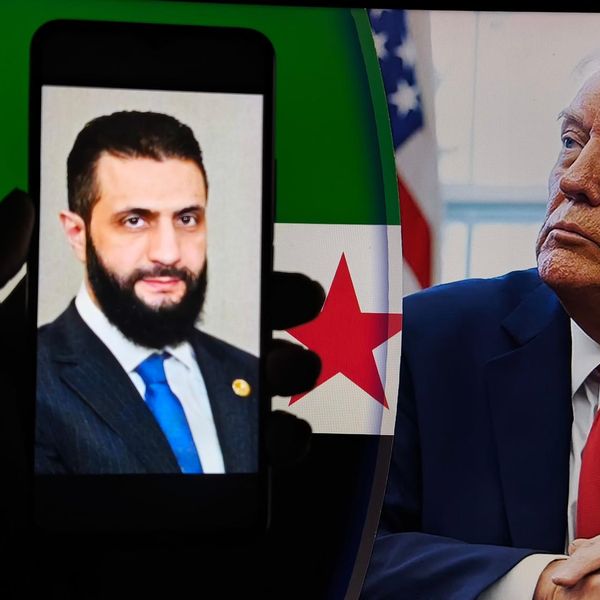Today, there are only three global naval powers: the United States, China, and Russia. The British Royal Navy is, sadly, reduced to a small regional naval power, able occasionally to deploy further afield. If Donald Trump wants European states to look after their own collective security, Britain might be better off keeping its handful of ships in the Atlantic.
European politicians and journalists talk constantly about the huge challenge in countering an apparently imminent Russian invasion, should the U.S. back away from NATO under President Trump. With Russia’s Black Sea fleet largely confined to the eastern Black Sea during the war, although still able to inflict severe damage on Ukraine, few people talk about the real Russian naval capacity to challenge Western dominance. Or, indeed, how this will increasingly come up against U.S. naval interests in the Pacific and, potentially, in the Arctic.
This was brought into sharp focus on April 22, when the Royal Navy deployed its Carrier Strike Group 25 on an eight-month deployment to the Indo-Pacific. Aboard the aircraft carrier, HMS The Prince of Wales, his battleship grey hair perfectly set like a character from a low-budget Top Gun movie, Prime Minister Keir Starmer said the deployment shows the UK’s “commitment to global stability. That is an incredible message to our adversaries. It is an incredible show of unity to our allies and our commitment to NATO.”
I wasn’t persuaded by this message. Supported by a frigate each from Canada, Norway, and Spain, almost half of Britain’s fighting ships embarked from Portsmouth and Devonport to much fanfare. When I say half of the ships, I mean, specifically, 1 aircraft carrier, 1 destroyer, 1 frigate, and 1 attack submarine. That’s right, four vessels.
That means the Royal Navy now has only one destroyer, two frigates (a third frigate is currently in Oman), and one attack submarine to defend British shores. Nine other ships are in dry docks, and another three are undergoing maintenance. Three of the Astute Class attack subs — only launched in 2014 — have been under repair for an average of two years each, and HMS Daring, “the world’s most advanced air defense destroyer,” has been in the dry dock since 2017.
If President Trump thought Britain could take more responsibility in Europe for naval security in the Atlantic, he would be wrong. The United Kingdom, the world’s first naval hegemon, now has nine fighting ships that are seaworthy, not including the nuclear missile submarines that are Britain’s Continuous At Sea Deterrent.
I’ve just finished reading “The Royal and Russian Navies, Cooperation, Competition and Confrontation,” written by Britain’s former Naval Attache to Moscow, (Ret.) Captain David Fields RN, and Robert Avery OBE, retired Principal Lecturer at the Defence Centre for Languages & Culture at the UK’s Defence Academy. The authors argue that while we have focused most of our attention on Russia’s army in Ukraine, its navy has rearmed at a fast clip. And thinking about Russia as a relic of its Cold War self is a huge mistake.
Despite being half the size of Britain, economically, laboring under sanctions and the tight fiscal constraints of the war in Ukraine, Russia’s naval yards have built new vessels non-stop for the past decade. Since 2011, Russia has taken delivery of 27 submarines, 6 frigates, 9 corvettes, 16 small missile ships, and other logistic support vessels. Many more are under construction and will arrive by the end of this decade. As the Russians say, “quantity has a quality all of its own.”
Russia now has a terrifying ability to threaten NATO countries through capabilities tested during the Ukraine war, such as its Kalibr Land Attack Cruise Missile, which has been used extensively against Ukrainian critical infrastructure. Its new ships are being fitted for the Tsirkon hypersonic missile and other innovations such as an underwater nuclear drone. I’ve been studying Russia long enough to remember the 2015 accidental (really, not accidental) TV leak of Russia’s plans for a nuclear torpedo.
The Royal Navy, on the other hand, has continued to shrink in the teeth of defense cuts, and each new efficiency drive makes it smaller. The two Albion-class landing vessels, in service for only 20 years, are laid up, and negotiations about their sale to Brazil are at an advanced stage. The increase in defense spending to 2.5% of GDP will mostly be swallowed by the MoD’s bloated procurement programs that are typically delayed and always over budget. It will not produce a rapid conveyor belt of ship-building that has seen Russia overtake Britain at a rapid pace since the Ukraine crisis started.
The book also underlines the importance of dialogue as a key component of deterrence and reminds the reader of the significant naval cooperation that took place between the two navies after the Cold War. When HMS Battleaxe sailed into Baltiysk in 1992, the first Royal Navy ship visit to modern-day Russia, it discovered the remnants of the Soviet Navy, most ships rusting over and unseaworthy, in a dilapidated dockyard. This was an allegory, perhaps, of the Royal Navy today. Fast forward to 2010, and the tide was already turning. The Russian Navy had become the main beneficiary of Russia’s state armament program, and a Russian admiral was saying the UK’s decision to give up the Nimrod Maritime Patrol Aircraft in 2010 made his “life easier.”
When Russia invaded Crimea in 2014, practically all direct engagement between the Royal and Russian navies was cut at the instigation of the UK government. Today, the UK and Russia have no serving military attachés in their respective embassies in London and Moscow for the first time since 1941. Our modern generation of seafarers are now only able to view Russians through binoculars, periscopes, and gun sights. And they have more guns than we do. Britain has literally watched a modernizing Russian navy sail off into a distant horizon as we’ve criticized Russia from an ivory conning tower.
From his ridiculous photo op on the deck of HMS The Prince of Wales, it’s not clear that Keir Starmer has understood that the world now contains just three global naval powers: the United States of America, China, and Russia.
Russian naval ambitions have now grown in the High North (Arctic) and in the Pacific.
While Britain’s modest Carrier Strike Group steams east, Russia has already been active in joint naval exercises with China and Iran, as well as ship visits to Myanmar and other locations. Britain has practically no scope to control Russia’s increasingly assertive naval posture in Asia.
This decade-long lack of engagement — not just by Britain but by America pre-Trump — has left us sailing blind on how Russian doctrine and tactics have shifted in the forge of war in Ukraine. It's clear to me that in this new world order of military burden sharing between America and Europe, Britain would be better placed keeping its handful of ships in the Atlantic, while America increasingly comes into contact with the Russian Navy in the Pacific.
- What’s behind Britain’s aggressive posture against Russia? ›
- Ukraine challenges conventional wisdom of war on the high seas ›
- The US Navy's five roads to ruin | Responsible Statecraft ›
- Secretary's remark that UK 'will fight' China is a dip into crazy town | Responsible Statecraft ›

